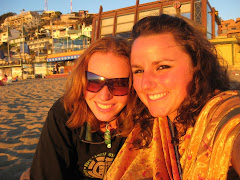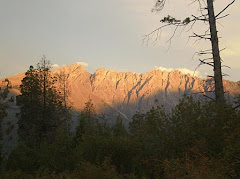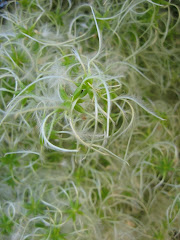 After a quick stop back in La Paz, Laura, Sergio and I were finally moving south. First stop, Cochabamba: known for its warm climate, good food, breathtaking scenery and tough women. These things all proved to be true.
After a quick stop back in La Paz, Laura, Sergio and I were finally moving south. First stop, Cochabamba: known for its warm climate, good food, breathtaking scenery and tough women. These things all proved to be true.Our flip flops made an appearance for the 1st time since Arequipa, Peru. We could go outside without a jacket. Amazing!
 As for the food, we starting eating our way through Cochabamba. The first night we ate in the market. (The place we once feared most has become our favorite eating stop; one after another, open stalls, long benches and tables you share with strangers, generally very large women with several pots calling out names of dishes you've never heard of, where most customers are called "mamita" or "papito". The hygiene might be questionable as they often put the food on your plate with their bare hands, but the market is so crowded that the food must be fresh. You just have to look past the partially skinned cow heads and hanging intestines on the way in.)
As for the food, we starting eating our way through Cochabamba. The first night we ate in the market. (The place we once feared most has become our favorite eating stop; one after another, open stalls, long benches and tables you share with strangers, generally very large women with several pots calling out names of dishes you've never heard of, where most customers are called "mamita" or "papito". The hygiene might be questionable as they often put the food on your plate with their bare hands, but the market is so crowded that the food must be fresh. You just have to look past the partially skinned cow heads and hanging intestines on the way in.)The nice thing about eating in Cochabamba is that the food is meant to be shared. The same plate might have a 20, 30, or 40 boliviano option depending on how many people are going to eat it. Laura, Sergio and I spent one afternoon eating duck. 3 people, 2 ducks, perfect. While at the restaurant we saw several cats and one dog go in and out of the kitchen... (They must have been the hunters.) We also shared Pique Macho, a typical Bolivian dish heaping with meat, sausage, chicken and potatoes and Silpancho, more meat, eggs, and potatoes.
 Another day we went to a small town, Punata, outside of Cochabamba where we ate chicharron, fried pork.... mmmmm, after eating humitas, a corn filling cooked inside a corn husk and banana juice. We ate a lot of food that day, but it was probably the chicha (corn liquor, typically drunk by several people from one, dried, squash-skin cup) that put us all to sleep on the ride back to Cocha.
Another day we went to a small town, Punata, outside of Cochabamba where we ate chicharron, fried pork.... mmmmm, after eating humitas, a corn filling cooked inside a corn husk and banana juice. We ate a lot of food that day, but it was probably the chicha (corn liquor, typically drunk by several people from one, dried, squash-skin cup) that put us all to sleep on the ride back to Cocha. Although eating was the highlight of our time in Cochabamba (at one point, even Laura said, "I'm never going to eat again!"), we also visited some spectacular sights. One being "the biggest statue of Cristo in the world" of course on a mountain, 1200 stairs to the top. The view of Cochabamba from the top was fantastique! Plus we needed the walk after all the eating we'd done.
Although eating was the highlight of our time in Cochabamba (at one point, even Laura said, "I'm never going to eat again!"), we also visited some spectacular sights. One being "the biggest statue of Cristo in the world" of course on a mountain, 1200 stairs to the top. The view of Cochabamba from the top was fantastique! Plus we needed the walk after all the eating we'd done.We spent one afternoon at the botanical garden (where we ate...ice cream), a very romantic place actually, which apparently created the need for a large sign outside asking couples to abstain from "obscenities" in the park. (Too toot! whistle blows)
 Another day we took a combis (van) up to a beautiful park 1 hour outside of the city. There was a big river and it was so quiet and peaceful you could fall in love. No wonder it was also full of young couples... doing obscenities (there was no sign to prohibit it, like in the botanical garden.) More impressive was the walk down from the park through a green farm village; corn fields, cows, little kids playing, people selling homemade liquors (of course we bought a bottle from some lady's back yard). It was almost story book like.
Another day we took a combis (van) up to a beautiful park 1 hour outside of the city. There was a big river and it was so quiet and peaceful you could fall in love. No wonder it was also full of young couples... doing obscenities (there was no sign to prohibit it, like in the botanical garden.) More impressive was the walk down from the park through a green farm village; corn fields, cows, little kids playing, people selling homemade liquors (of course we bought a bottle from some lady's back yard). It was almost story book like. As I said, Cochabamba lived up to its reputation: nice climate, good food, beautiful surroundings and as for the women of Cochabamba...why are they so tough? Well, if you just take a look at them, they're not exactly tiny... That's for sure. But more importantly, history says that when the Spanish invaded Cochabamba, the men were off at war and the women were the ones who protected the town and fought the Spaniards out. In fact, the women won hands down. Nowadays women seem to run the show in Cochabamba. The men just do as they're told. (Hmmm sounds good to me).
As I said, Cochabamba lived up to its reputation: nice climate, good food, beautiful surroundings and as for the women of Cochabamba...why are they so tough? Well, if you just take a look at them, they're not exactly tiny... That's for sure. But more importantly, history says that when the Spanish invaded Cochabamba, the men were off at war and the women were the ones who protected the town and fought the Spaniards out. In fact, the women won hands down. Nowadays women seem to run the show in Cochabamba. The men just do as they're told. (Hmmm sounds good to me).













No comments:
Post a Comment